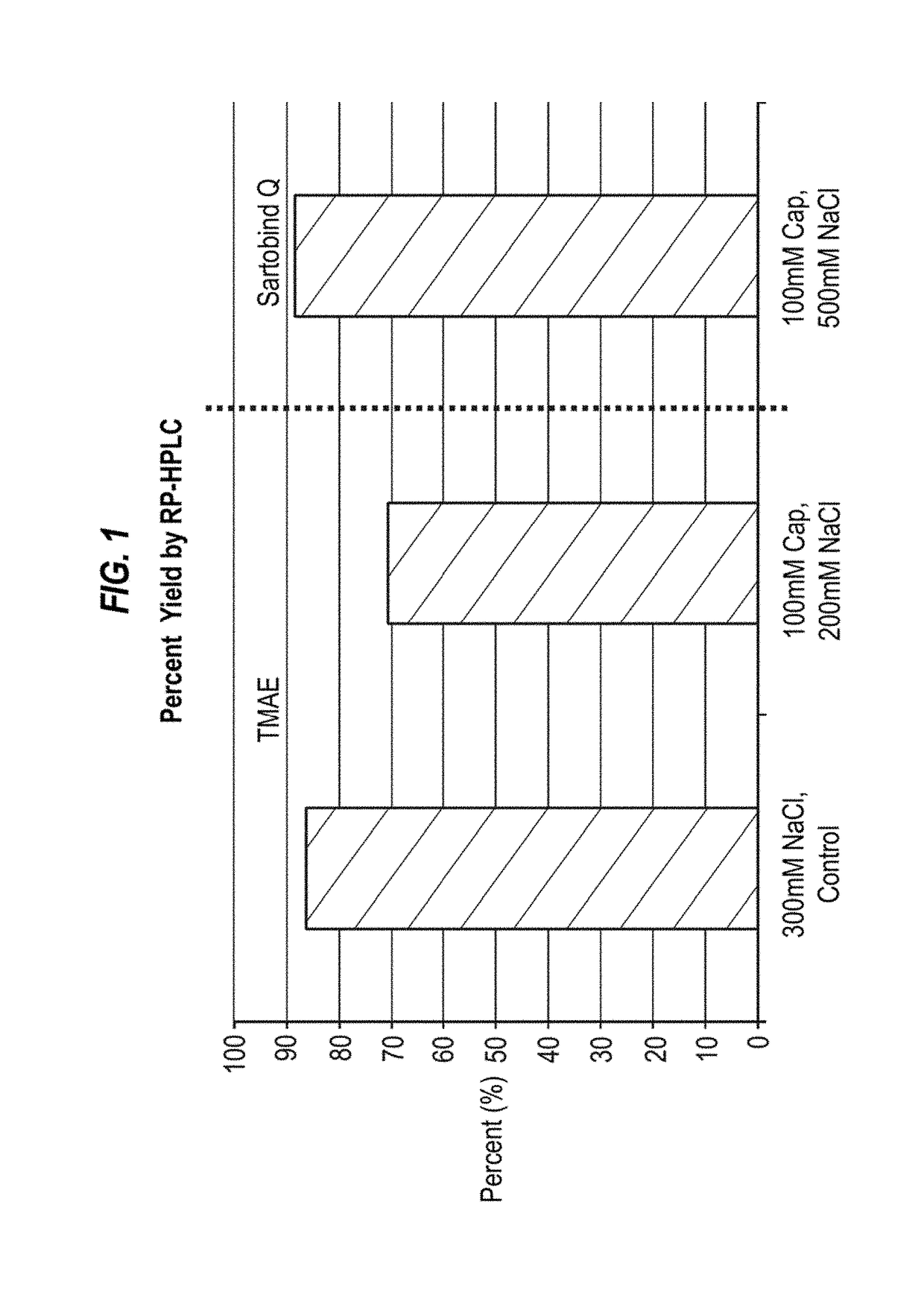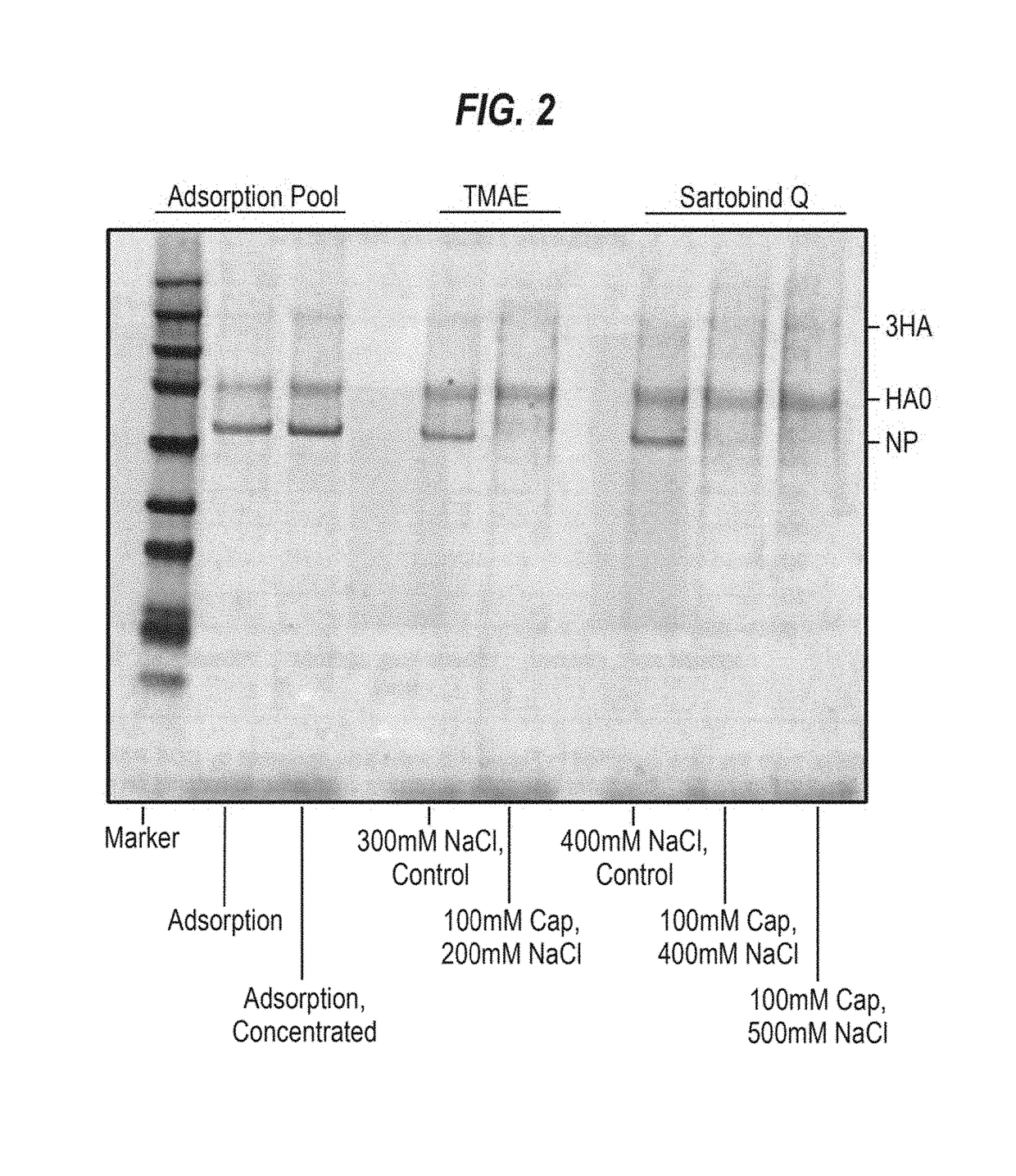Removal of residual cell culture impurities
a cell culture and impurity technology, applied in the field of host cell protein production, can solve the problems of inefficiency of separating negatively charged dna impurities, and achieve the effects of improving purity and/or safety, reducing the number of impurities, and increasing the yield of biological products
- Summary
- Abstract
- Description
- Claims
- Application Information
AI Technical Summary
Benefits of technology
Problems solved by technology
Method used
Image
Examples
examples
[0109]An H5N1 virus was propagated in MDCK suspension cells, harvested and processed as described in Onions et al., 2010. The split virus preparation was subjected to ion exchange chromatography using a SARTOBIND Q (Sartorius) or a FRACTOGEL TMAE (EMD Millipore) membrane. The optimal salt concentration found for TMAE was determined to be approximately 300 mM, while the optimal concentration found for SARTOBIND Q was greater than 400 mM. Preparations with different detergents and chatoropric reagents were conducted. The pH of the final compositions was 7.5, except for the arginine compositions, which had a pH of 7.2. DNA reduction was assessed by Picogreen and protein yield was assessed by the BCA assay. Overall, SARTOBINDQ performed better than TMAE in DNA reduction; however, all runs utilizing sodium caprylate showed significant increase in DNA reduction compared to just NaCl. Robust results could be obtained with 50 mM caprylate and 400 mM NaCl on a SARTOBINDQ membrane. BCA values...
PUM
| Property | Measurement | Unit |
|---|---|---|
| pH | aaaaa | aaaaa |
| pH | aaaaa | aaaaa |
| pH | aaaaa | aaaaa |
Abstract
Description
Claims
Application Information
 Login to View More
Login to View More - R&D
- Intellectual Property
- Life Sciences
- Materials
- Tech Scout
- Unparalleled Data Quality
- Higher Quality Content
- 60% Fewer Hallucinations
Browse by: Latest US Patents, China's latest patents, Technical Efficacy Thesaurus, Application Domain, Technology Topic, Popular Technical Reports.
© 2025 PatSnap. All rights reserved.Legal|Privacy policy|Modern Slavery Act Transparency Statement|Sitemap|About US| Contact US: help@patsnap.com



